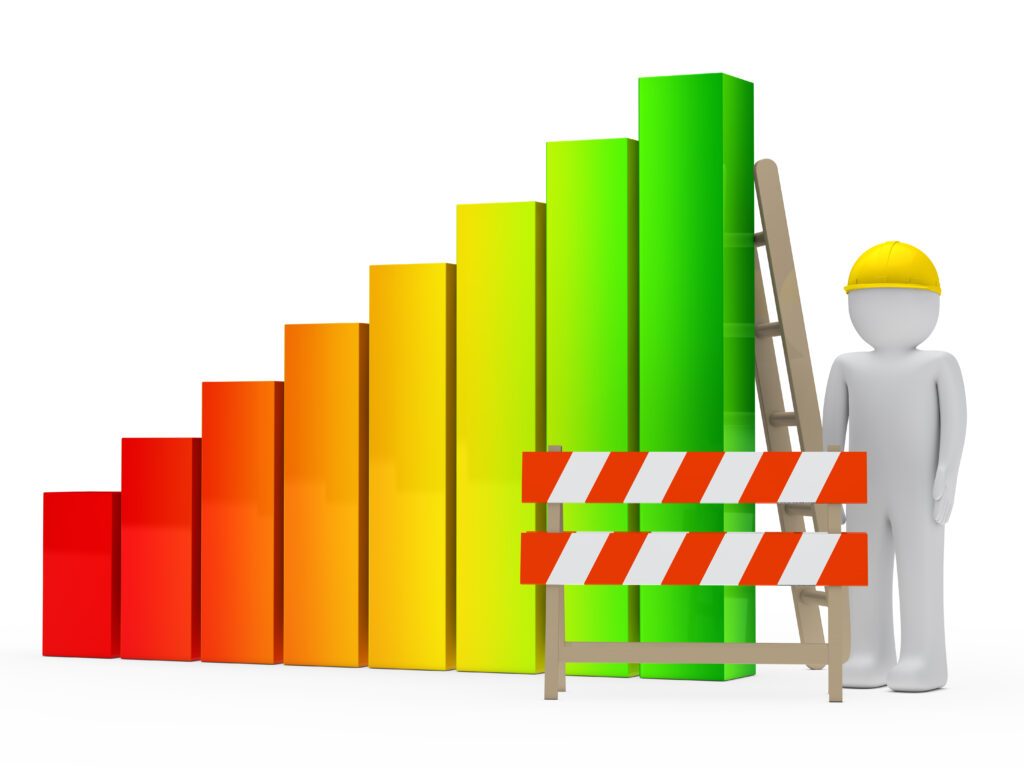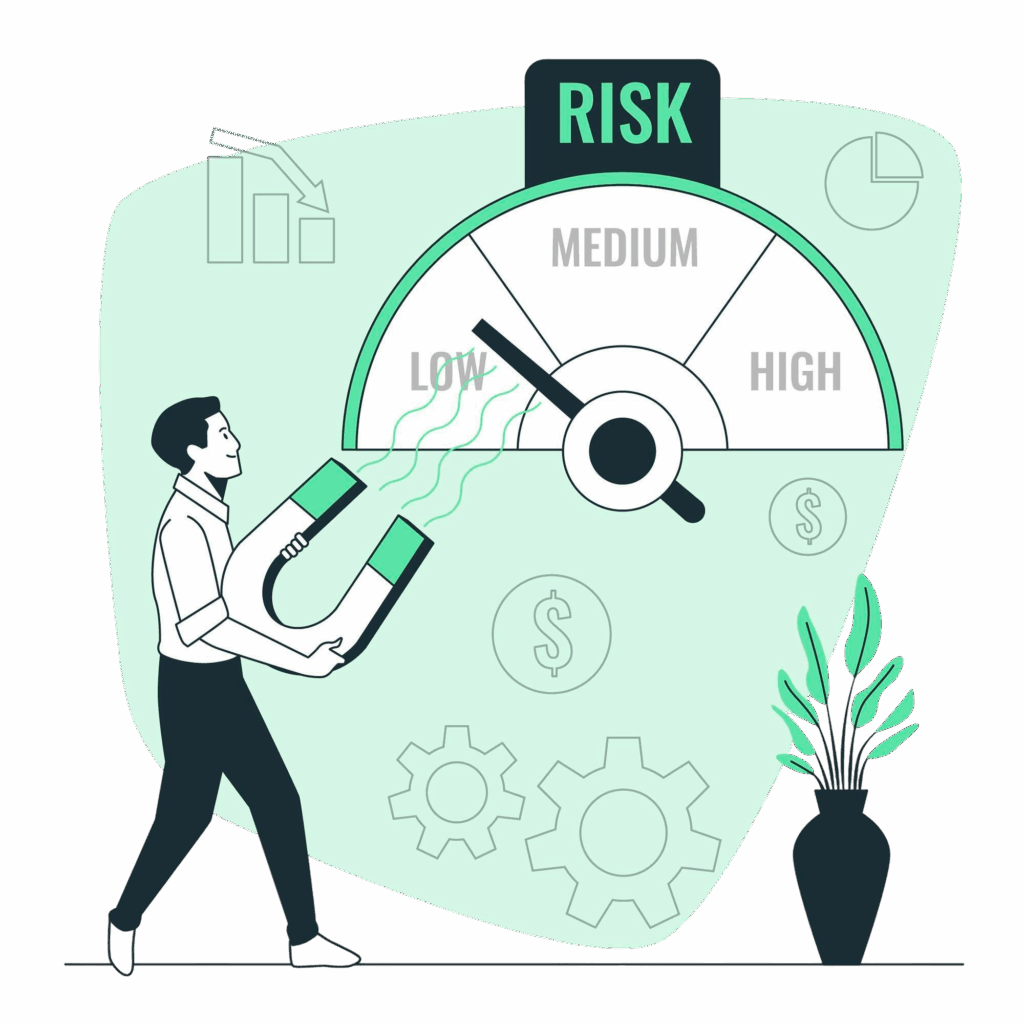Vendor Scorecards in Reputation Management

Vendor reputation management is more than just negotiating the best deals or getting the best prices. It’s also about assessing the vendor risk that comes with partnering with any company, especially in terms of security. As your company relies more on third-party vendors, understanding and managing these risks becomes essential for safeguarding sensitive data and maintaining your company’s reputation.
When assessing a vendor’s risk, there’s no one-size-fits-all approach. Vendor risk management and the methods used to determine vendor risk scores can be complex, but they are crucial for preventing potential security breaches, financial loss, or reputation damage.
But how do vendors scorecards report on a company’s security?
That’s exactly what we’ll dive into, covering everything from the importance of risk assessment scoring to how you can check your own scores.
Understanding Vendor Risk Scores in Reputation Management and Their Importance
What Is Vendor Risk and vendor risk score?
Vendor risk entails third-party vendors’ risks to your business regarding its operations and reputation. In the modern world reliance on external partners brings a lot of risks to your business. For instance, if one of your vendors is an outsourcing company recently attacked by cybercriminals, your customers’ information could be at risk.
A vendor risk score is an index, which can be numeric or qualitative and reflects potential risks linked to a specific vendor. It can often depend on approximately six parameters such as; financial health, security, legal issues, and overall performance history of the vendor. These make it possible for businesses to evaluate the amount of danger that a particular vendor poses to it.
Why Do Vendor Risk Scores Matter?
A vendor risk score in a way is like a progress report when it comes to the vendors with which your business interacts. However, just like your business requires that you keep track of your performance, so do your vendors regarding security and compliance. These scores make it easier for you to address any problems while they are still small before they get out of hand. They bear the view of the third-party risk that you are facing as well as how to mitigate it.
How to Score Vendor Risks

Scoring vendor risks involves assessing various criteria to determine the overall risk level. Just like Risk Scoring. This typically results in a numerical or color-coded scale, such as low, medium, or high, with each level representing different levels of threat.
Steps to Score Vendor Risks
1.Collect Data: Before scoring a vendor, one requires a vast information base about the business. This involves all of the following; financial records, security measures taken, Incidents that occurred in the facility, and compliance documents. This information is obtained by using vendor questionnaires, interviews, and audits.
2. Use Risk Assessment Frameworks: There are various risk assessment models you can use to apply scores to vendor risks. Popular frameworks include:
NIST Cybersecurity Framework: This framework enables one to evaluate vendor’s approach to managing risks concerning cybersecurity.
ISO 27001: This standard is critical when assessing a vendor’s data security management system is crucial.
SOC 2: A way of determining the computational security that will be available from a vendor.
3. Assign Weight to Criteria: Not all risks are similar. While some risks are inherent in the processes to which you commit your organization, others can be catastrophic to your enterprise – like cybersecurity or compliance setbacks. Rank those factors by giving each a score that indicates their level of risk. For example, you might score cybersecurity more than financial stability.
4. Score Each Criterion: For each of the vendors, assign a score to each criterion you made realize your investigations. For instance, if another vendor is very good at implementing cybersecurity measures, they should get a higher score here. In case they do not conform to the regulatory standards, they should be given a lesser score.
5. Calculate the Total Risk Score: Sum of individual scores can be used to determine the overall risk score of the vendor. This score will help you determine how well the vendor matches your business and its tolerance to risks.
6. Categorize the Risk Level: Based on the total score attained, the risk level of the vendor must be grouped into low risk, moderate risk, or high risk. This will assist you in identifying the required measures to prevent a recurrence of the risk.
Reputation Management Risk: The Role It Plays
 There is nothing quite so disconcerting as a reputation risk as this is something that remains unnoticed and unseen for the most part. A low vendor risk score means that your vendor is risky, maybe they have a bad reputation or experience a breach or a security incident. This kind of risk assessment scoring pays a lot of attention to the vendor’s performance on customer trust and protection of data.
There is nothing quite so disconcerting as a reputation risk as this is something that remains unnoticed and unseen for the most part. A low vendor risk score means that your vendor is risky, maybe they have a bad reputation or experience a breach or a security incident. This kind of risk assessment scoring pays a lot of attention to the vendor’s performance on customer trust and protection of data.
This means that history, incidents, that may be detrimental to a vendor, and their response to past risks should inform their scores. Have they effectively communicated their security measures? Are they compliant with archival standards such as; ISO, or SOC 2? If they are concealing some weaknesses, poor health included, that is a sign that they are not suitable for the job.
Key Components of a Vendor Risk Score in Reputation Management
The risk score is made up of several elements, each representing a different aspect of vendor risk. These include:
Cybersecurity Risks: This is one of the most important ones. Poor and outdated cybersecurity risk management policies of your vendor’s risks can lead to hacking, leakage of important data, or ransomware attacks on your business. The risk score will capture how strong a vendor is in terms of preserving data, using encryption abilities, and hedging against outside threats.
- Regulatory Compliance: Any vendor should follow the laws and standards including GDPR, HIPAA, PCI DSS, etc. A vendor score will show just how well they know such regulations as well as to what extent they assist you in remaining compliant.
- Reputation Risk: The risk score of a vendor contains the reputation of the vendor. Should they have been involved in previous scandals, or breaches or possessed a bad record on offering services to their customers, their score will be reduced. This is because, for instance, if a vendor you have sought services from has a bad reputation, this will be an indication that your business is also of low quality.
- Financial Stability: Another important element involves a vendor’s financial standing of the firm in question. An instance is where the vendor you rely on is financially weak, and he may sometimes be unable to supply your business. Anything below the benchmark here suggests that the vendor might probably go broke or have operational issues.
- Operational Risks: This comprises a vendor’s resilience as well as the capacity to address a disruption. A vendor that does not have a proper disaster recovery plan or who fails to deliver his work on time can raise the operational risks of the firm.
- Financial Stability: Another important element involves a vendor’s financial standing of the firm in question. An instance is where the vendor you rely on is financially weak, and he may sometimes be unable to supply your business. Anything below the benchmark here suggests that the vendor might probably go broke or have operational issues.
- Reputation Risk: The risk score of a vendor contains the reputation of the vendor. Should they have been involved in previous scandals, or breaches or possessed a bad record on offering services to their customers, their score will be reduced. This is because, for instance, if a vendor you have sought services from has a bad reputation, this will be an indication that your business is also of low quality.
When to Use Vendor Risk Scoring
- Timing is key
 It is important to know when to come up with a vendor risk scoring process to come up with the right decision at the right time the following factors should be considered. Though it is advisable to undertake this exercise at the early stages of potentially sustainable business relations, it is equally useful to repeat the scores from time to time. Vendor circumstances can change with time depending on the company they manage to improve their security, face some financial challenges, or a merger or acquisition among other factors.
It is important to know when to come up with a vendor risk scoring process to come up with the right decision at the right time the following factors should be considered. Though it is advisable to undertake this exercise at the early stages of potentially sustainable business relations, it is equally useful to repeat the scores from time to time. Vendor circumstances can change with time depending on the company they manage to improve their security, face some financial challenges, or a merger or acquisition among other factors.
As much as possible if you have sealed contracts already, it is quite reasonable to take time and look at the risk ratings again. It’s even possible to receive fresh scorecards from vendors during its use within the framework of a contract. A routine check-up makes it possible for you to remain abreast with emerging risks regardless of whether they have to do with reputation, security, or financial health.
- Proactive Approach
 Taking preventive and coming up with methods of evaluating vendor risk before the outcome is a great mix for your company. Do not take your chances and wait for a serious event to happen. Catching any concerns early ensures that something can be done before things go from bad to worse.
Taking preventive and coming up with methods of evaluating vendor risk before the outcome is a great mix for your company. Do not take your chances and wait for a serious event to happen. Catching any concerns early ensures that something can be done before things go from bad to worse.
Vendor Risk Scoring Best Practices
While scoring vendor risks may seem straightforward, there are several best practices that can help you streamline the process and make it more effective in reducing potential threats.
- Adopt a Holistic Approach
Don’t just focus on one or two areas of risk when scoring vendors. An all-encompassing approach looks at all the potential risks in the firm’s financial situation, image, and security. In fact, by taking into account as many factors as possible you will obtain a better understanding of certain vendor’s influence over your business.
- Consistently Assess Vendor Risk Ratings
Original vendor risk is not fixed; its status evolves. A vendor can be given a low-risk score at the initial stage and may experience challenges that make them it falls under other risk levels. For instance, a vendor may be hit by a cyber-attack, fall out with its financials, or fail an audit. This allows you to be constantly reminded of any emerging risk so that you can always go back to review your vendor risk scores.
Schedule time for meetings after which you revise the vendors you are working with, for example, every 3 months, 6 months, or a year. Make sure the process consists of tracking any new risks that occur like shift in cybersecurity or compliance.
At Asher Security we also employ the same tactic with our rapid risk plan clients. Book an appointment now.
- Instead, utilize technology to automate scoring.
A manual process used in scoring the risk associated with vendors may be tiresome, and sometimes it involves a lot of risks. For this, deploy technology as well as implement automated tools, if possible, in the workflow process. Several software platforms, such as RiskRecon and BitSight, allow you to evaluate vendors’ risk scores in real-time, automatically pulling in data from various sources.
They are capable of producing global risk reports and at the same time recommend ways of enhancing the operation of the vendors. This means that the scoring process becomes more efficient and less subjective.
- Develop a Vendor Risk Management Policy
The company must have a well-set policy on vendor risk management since it will act as a baseline. This policy should provide the criteria by which risk from vendors is to be scored; the frequency of scoring; and the action to be taken when the score of a vendor drops to a specified level.
A sound policy helps your organization to contain vendor risk systematically so that no one individual can overlook important risks.
Click the below to check our Risk Assessment Funnel:
Click here for links
- Communicate with Your Vendors
Vendors are indispensable for suppliers, and their risks are critical when it comes to transparency. In cases where a vendor has been given a low-risk score talk to the vendor and ask them how they are managing the risks that have been identified. This ensures that the two of you are trying to solve problems together hence strengthening your relationship and creating coherence in the partnership.
- Integrate Risk Identification and Scoring into Vendor Agreements
The process of vendor risk assessments should be included in the contracts with the vendors. Be very specific on what you expect in terms of security, regulation, and performance, and remember to in the contract have timelines for reviewing the vendor’s risk rating in the future. Where the vendor’s score has taken a very low score, the contract should show what action should be taken, including; rectification measures or removal of the vendor.
What to Do if You Get a Bad Score

Don’t Panic—Take Action!
Obtaining a poor result is quite shocking. But it doesn’t mean that you must replace a particular vendor at once. But rather use this chance to discuss with them and know where you think they are shortcoming.
- Review the Results: Examine the distribution of the scorecard below to discover which of these led to a low score. Was it a violation of their security measures? Perhaps, it has to do with one’s financial strength Security is either one of them;
- Engage with the Vendor: Discuss the outcomes with them and also demand they give you the measures for corrective action to correct the problems. Are they ready to pay for enhancing their security arrangements or compliance situation?
- Negotiate Terms: If they cannot do that at the moment, you may wish to challenge or renegotiate the terms of your partnership agreement. Maybe you should apply high-security measures or require more frequent inspections of your company’s security.
- Have a Contingency Plan: If the vendor cannot or will not change for the better, you have to consider a contingency plan. This could mean switching to a new vendor or enhancing the surveillance of the vendor’s activities.
When to Sever Ties
In extreme cases, you may have to part ways with the vendor. If they have a consistent history of poor risk management, or if their response to your concerns is inadequate, it may be time to find a new partner.
Final Thoughts
Knowledge of what exactly vendor risk score is, how scoring for vendor risks is done, and compliance with the best practices of vendor risk scoring are some of the crucial steps needed in protecting third party vendor risk management. Through identifying cybersecurity, financial, reputational, and compliance risks, it is possible to prevent a range of threats that may negatively affect your company. Vendor risk management should be on going. Establishing vendor risk scores and tracking changes enables managerially relevant decisions that mitigates exposure to risks from vendor failures and resultant business disruption, and financial losses.
Always be proactive in your approach to the vendors, and constantly do what is possible to keep up with the vendor risks as well as reputation management.
You also don’t need to do all this alone. Asher Security is here to:
- Clearly identify the crown jewels of your business, so that protection efforts have the greatest risk reduction results.
- Build a solid cyber road map that organizes and prioritizes your resources and budget.
- Measure and track progress to show leadership the success of security initiatives.
You can schedule a free no obligation meeting:
SCHEDULE A MEETINGAnd also join our Cyber Collective, monthly Newsletter:
Join Our Newsletter

Recent Comments